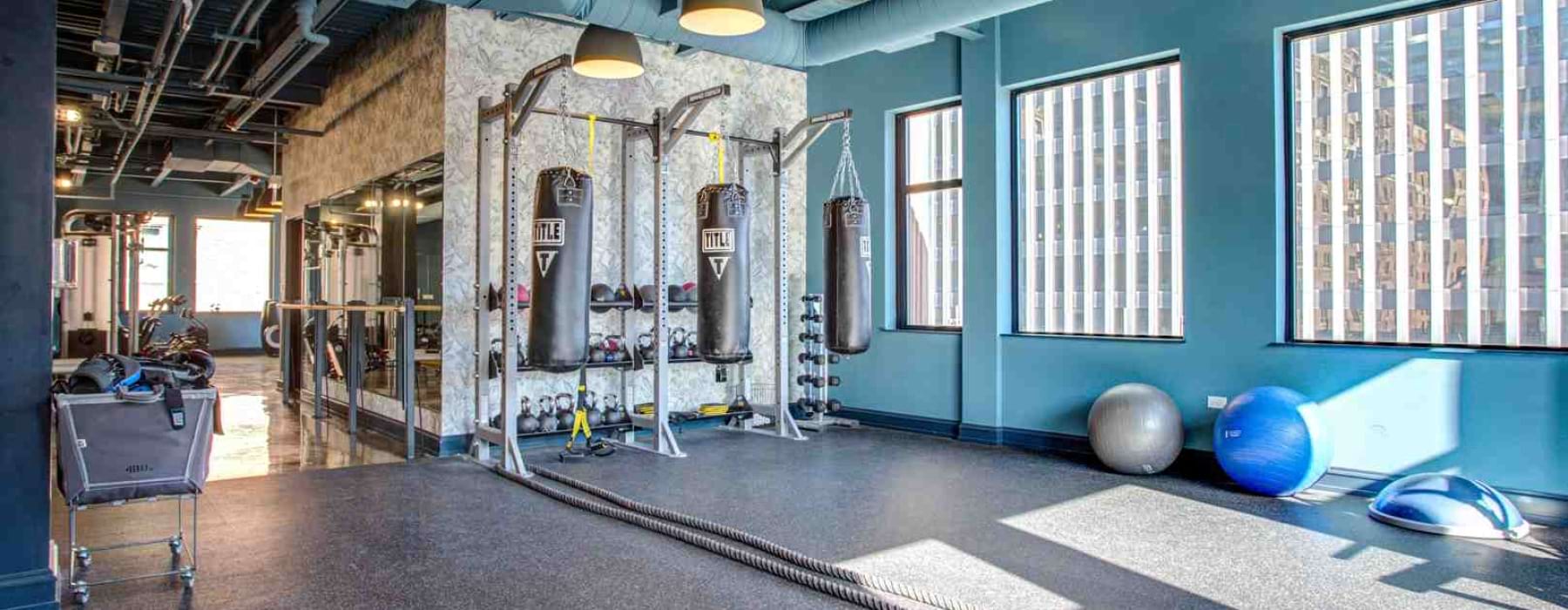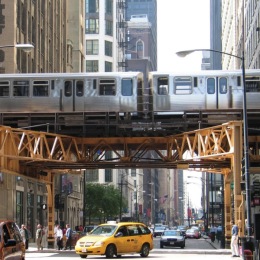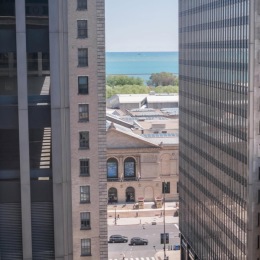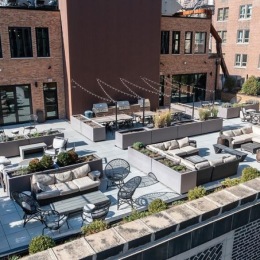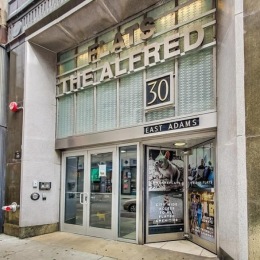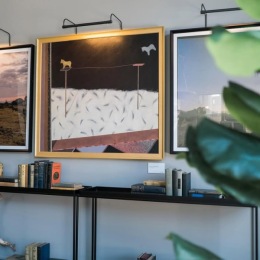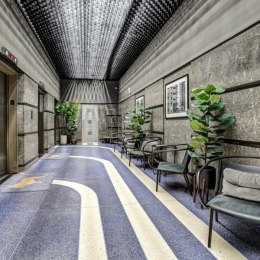7 Effective Tips for Finding Studio Apartments Downtown
Why Studio Apartments Downtown Are Perfect for Urban Living
Finding studio apartments downtown requires understanding what makes these compact spaces work for city living. Studios offer an efficient, affordable way to live in the heart of urban areas with access to restaurants, entertainment, and public transportation.
Key factors when searching for studio apartments downtown:
- Size: Studios typically range from 350-550 square feet, with micro-lofts as small as 150-190 square feet
- Layout: Open-concept design combining living, sleeping, and kitchen areas in one room
- Location benefits: High walkability scores (downtown areas often score 90+), excellent public transit access, and proximity to urban amenities
- Rent considerations: Prices vary significantly by city - from under $700 in smaller markets to over $2,000 in major metropolitan areas
- Amenities: Many downtown studios include utilities, fitness centers, rooftop spaces, and pet-friendly policies
The appeal of downtown studio living goes beyond just saving money. These spaces force you to live more intentionally while putting you steps away from the city's best offerings. Studios can lower utility costs, conserve energy, and reduce cleaning time - benefits that matter when you're busy enjoying urban life.
Whether you're a young professional starting your career or someone who values location over square footage, downtown studios offer a unique lifestyle opportunity. The key is knowing what to look for and how to make the most of compact living.
What This Guide Covers
We'll walk you through seven essential tips for finding the perfect downtown studio, covering everything from understanding what makes a studio apartment unique to mastering the application process. You'll learn how to evaluate rent prices across different markets, assess location scores for walkability and transit access, and find what amenities matter most in compact living spaces.
Our guide addresses the most common questions renters have: How do studios differ from one-bedroom apartments? What's a reasonable size for comfortable living? How can you find the best deals and incentives? What should you prioritize when it comes to location and commute times?
Tip 1: Know What a Studio Apartment Is
A studio apartment is essentially one large room that serves as your living room, bedroom, and kitchen all in one open-concept space. Unlike traditional apartments with separate rooms, studios maximize efficiency by eliminating interior walls and hallways. This design creates a surprisingly functional living space that many urban dwellers find liberating.
The typical studio features a kitchenette along one wall, an open area for living and sleeping, and a separate bathroom. Some studios include a small dining nook or built-in storage solutions. The beauty of this layout is its flexibility - you can arrange your furniture to create distinct zones for different activities without being constrained by fixed room boundaries.
Most downtown studios range from 350 to 550 square feet, though micro-lofts can be as compact as 150 to 190 square feet. Despite their size, well-designed studios feel spacious when they feature high ceilings, large windows, and smart storage solutions. The open layout actually makes the space feel larger than a cramped one-bedroom of similar square footage.
How Studios Differ from Other Units
The main difference between studios and other apartment types is the absence of a separate bedroom. In a studio, your sleeping area is part of the main living space, which requires thoughtful furniture placement and creative solutions for privacy. This living-sleeping combo might seem challenging at first, but many residents find it creates a more social, open environment.
Studios typically feature a kitchenette rather than a full kitchen. This usually means a smaller refrigerator, limited counter space, and sometimes a two-burner cooktop instead of a full range. However, many downtown studios compensate with high-end appliances and clever storage solutions that make cooking enjoyable despite the compact size.
The lack of interior walls means studios require different decorating strategies. You'll need to create visual separation between your sleeping and living areas using furniture, room dividers, or strategic lighting. This open concept can actually be an advantage - it forces you to be more intentional about your belongings and creates a clean, minimalist aesthetic that many find appealing.
Tip 2: Measure Your Space Needs Before Touring
Before you start touring studio apartments downtown, take time to honestly assess your space requirements. Consider your lifestyle, work habits, and storage needs. Do you work from home and need a dedicated desk area? Are you someone who entertains frequently, or do you prefer intimate gatherings? Understanding these preferences will help you evaluate whether a studio's layout works for your daily routine.
Create a list of your essential furniture pieces and measure them. Your bed, desk, dresser, and any large items need to fit comfortably while leaving room for movement. Many successful studio dwellers recommend multipurpose furniture - a bed with built-in storage, a dining table that doubles as a workspace, or an ottoman that provides seating and storage.

Consider your storage needs carefully. Studios require creative organization solutions since you won't have a separate bedroom closet, linen closet, or storage room. Look for units with built-in storage, large closets, or space for tall bookcases and storage units. Some downtown studios include storage lockers in the building, which can be a game-changer for seasonal items or sports equipment.
Quick Size Benchmarks
Understanding typical studio sizes helps you set realistic expectations. Studios in downtown areas typically range from 350 to 550 square feet, with the sweet spot being around 400-450 square feet for comfortable living. This size allows for a queen bed, small sofa, dining table, and adequate storage without feeling cramped.
Micro-lofts represent the smallest category, ranging from 150 to 190 square feet. These ultra-compact spaces work best for minimalists who spend most of their time outside the apartment. They typically feature a lofted bed to maximize floor space and require extremely efficient storage solutions.
On the larger end, some downtown studios approach 600-700 square feet. These spaces often feel more like one-bedroom apartments and may include features like a separate alcove for sleeping or a larger kitchen area. While these larger studios cost more, they offer significantly more flexibility in furniture arrangement and storage.
Tip 3: Compare Rent Prices for Studio Apartments Downtown
Rent prices for studio apartments downtown vary dramatically depending on your city and specific neighborhood. Understanding the local market helps you set a realistic budget and identify good deals. Based on current market data, here's what you can expect in different cities:
In Dallas, downtown studio rents range from $918 per month at budget-friendly properties to $2,114 at luxury buildings. Fort Worth offers more affordable options, with studios starting as low as $321 per month for income-restricted units and reaching $1,773 for premium locations. Springfield, Missouri provides some of the most affordable downtown studio options, starting at $655 per month.
Kansas City presents a mid-range market with studios typically priced between $1,158 and $2,362. Chicago's Loop area, where luxury properties like The Alfred offer historic charm with modern amenities, represents the premium end of the market. These variations reflect differences in local economies, demand, and the overall cost of living.
Many downtown properties offer move-in specials that can significantly reduce your first-year costs. Common incentives include one or two months of free rent, waived application fees, or reduced security deposits. These deals are often seasonal, with the best offers typically available during winter months when demand is lower.
Finding the Best Deals on Studio Apartments Downtown
The key to finding great deals on downtown studios is timing and flexibility. Property managers often offer the best incentives during slower leasing periods, typically from November through February. If you can be flexible with your move-in date, you'll have more negotiating power.
Income-restricted units can provide substantial savings for qualifying renters. These apartments, often part of mixed-income developments, offer below-market rents while maintaining the same amenities and location benefits as market-rate units. The application process may be more complex, but the savings can be significant.
Look for properties offering "months-free" promotions, which spread the discount across your entire lease term. A deal offering two months free on a 12-month lease effectively reduces your monthly rent by about 17%. These promotions are often negotiable, especially if you're willing to sign a longer lease.
Consider the total cost of living, not just rent. Studios that include utilities, internet, or parking in the rent price may offer better value than seemingly cheaper options that require you to pay these expenses separately. Downtown locations with high Walk Scores can also save you money on transportation costs.
Tip 4: Prioritize Location Scores & Transportation
Location is everything when it comes to studio apartments downtown, and transportation scores help you quantify a neighborhood's convenience. Walk Score, Bike Score, and Transit Score provide objective measures of how easy it is to accomplish daily tasks without a car. Downtown Dallas, for example, boasts a Walk Score of 93, making it a "Walker's Paradise" where most errands can be accomplished on foot.
The same area scores 96 for bikeability, earning a "Biker's Paradise" rating that indicates biking is convenient for most trips. With a Transit Score of 71, downtown Dallas offers excellent public transportation options. These high scores mean you can live comfortably without a car, saving hundreds of dollars monthly on parking, insurance, and maintenance.
When evaluating studio apartments downtown, consider how the location affects your daily commute. Many rental websites now offer commute filters that calculate travel times to your workplace during rush hour. This feature helps you understand the real-world impact of different locations on your daily routine.
Transportation access becomes even more important in a studio since you'll likely spend more time outside your apartment. Easy access to restaurants, entertainment, parks, and cultural attractions makes up for the smaller living space. Look for buildings near multiple transportation options - bus lines, subway stations, bike-share programs, and ride-share pickup zones.
Studio Apartments Downtown & Your Daily Commute
Living downtown in a studio often means embracing car-free living or significantly reducing your reliance on personal vehicles. This lifestyle shift can be liberating and economical, but it requires choosing the right location. Consider your daily destinations beyond work - grocery stores, gym, pharmacy, and social venues.
Rush-hour commuting looks different when you live downtown. Instead of sitting in traffic, you might walk to work, take a short train ride, or bike along dedicated lanes. Many downtown studio residents find their commute becomes a pleasant part of their day rather than a source of stress.
If you do need a car occasionally, evaluate parking options carefully. Some downtown buildings include parking in the rent, while others charge $100-300+ monthly for garage spaces. Street parking may be limited or require permits. Consider whether car-sharing services or ride-sharing apps could meet your occasional driving needs more economically.
Bike storage is crucial if you plan to cycle regularly. Look for buildings with secure bike storage, maintenance stations, or bike-share program access. Many downtown areas are increasingly bike-friendly, with protected lanes and bike-share programs making cycling a practical transportation option.
Tip 5: Hunt for Incentives, Amenities & Pet Policies
Modern studio apartments downtown often compensate for limited square footage with exceptional amenities. These shared spaces effectively extend your living area and can make a 400-square-foot studio feel much more spacious. Common amenities include fitness centers, rooftop terraces, coworking spaces, and community lounges that serve as your extended living room.
Look for properties that include utilities in the rent - this simplifies budgeting and often provides better value than paying separately. Many downtown studios include high-speed internet, which is essential for remote work and streaming entertainment. Some buildings even provide community Wi-Fi in common areas, ensuring you stay connected throughout the property.
Pet policies vary significantly among downtown properties. If you have pets, factor in pet fees, weight restrictions, and available amenities like dog parks or pet washing stations. Some buildings charge monthly pet rent ($25-75), while others require a one-time pet deposit. Buildings with on-site dog parks or nearby green spaces make pet ownership much more convenient in an urban setting.
Popular Amenities in Studio Apartments Downtown
Fitness centers have become standard in many downtown studio buildings, eliminating the need for expensive gym memberships. Look for facilities with modern equipment, group fitness classes, or yoga studios. Some premium buildings even offer personal training services or partnerships with local fitness brands.
Rooftop spaces provide valuable outdoor living areas that downtown studio residents especially appreciate. These amenities might include grilling stations, fire pits, outdoor seating areas, or even small gardens. During good weather, rooftop amenities effectively double your living space and provide venues for entertaining friends.
Coworking spaces within residential buildings have become increasingly popular, especially post-pandemic. These areas provide professional environments for remote work, complete with high-speed internet, printing services, and conference rooms. For studio dwellers who work from home, these spaces offer a crucial separation between work and living areas.
In-unit washers and dryers are particularly valuable in studios since you won't have space for storing dirty laundry. Buildings without in-unit laundry should offer convenient, modern laundry facilities with multiple machines and possibly wash-and-fold services.
Tip 6: Master the Application & Leasing Process
The application process for studio apartments downtown typically requires more preparation than suburban rentals due to higher demand and competitive markets. Most landlords require income verification showing you earn at least 2.5 times the monthly rent. This means for a $1,500 studio, you'd need to demonstrate monthly income of at least $3,750.
Gather your documentation before you start touring: recent pay stubs, tax returns, bank statements, and references from previous landlords. Having these ready allows you to submit applications quickly when you find the right place. In competitive markets, delays can mean losing your preferred unit to another applicant.
Credit checks are standard, and most downtown properties prefer tenants with scores above 650. If your credit needs work, consider offering a larger security deposit or finding a co-signer. Some properties work with applicants who have limited credit history but stable income, especially if you're a recent graduate or new to the area.
Virtual tours have become increasingly sophisticated and can save you time during your search. However, always try to visit your top choices in person before signing a lease. Photos and videos can't convey everything about noise levels, natural light, or the feel of the neighborhood.
Steps to Secure a Studio Apartment Downtown
Start by scheduling tours of your top choices during different times of day. A studio that seems perfect on a quiet Tuesday morning might feel different during rush hour or on a Friday evening. Pay attention to noise levels, natural light at different times, and how the space feels during various activities.
Submit applications promptly for units you're serious about. Many downtown properties use online portals that allow you to upload documents and track your application status. Be prepared to pay application fees (typically $50-150) and potentially hold deposits to secure your preferred unit.
Review lease terms carefully before signing. Pay attention to lease length options, renewal policies, and any restrictions on subletting. Some downtown properties offer flexible lease terms or month-to-month options after your initial lease period, which can be valuable if your situation might change.
Arrange for renters insurance before moving in, as most landlords require coverage. This protects your belongings and provides liability coverage. Many insurance companies offer discounts for downtown locations with security features like controlled access or doorman services.
Tip 7: Optimize Your Small Space After Move-In
Once you've secured your studio apartment downtown, the real fun begins - making the most of your compact space. Successful studio living requires strategic thinking about every square foot. Start with vertical storage solutions that draw the eye upward and make the space feel larger. Floor-to-ceiling shelving, wall-mounted desks, and hanging organizers maximize storage without consuming floor space.
Multipurpose furniture is your best friend in a studio. Ottoman storage cubes provide seating and hide clutter. A dining table that doubles as a desk saves space and money. Nesting tables can be tucked away when not needed but provide surface area when entertaining. Invest in quality pieces that serve multiple functions rather than filling your space with single-purpose items.
Color palette choices significantly impact how spacious your studio feels. Light, neutral colors reflect light and create an airy feeling, while dark colors can make the space feel smaller. However, don't be afraid to add personality with colorful accents, artwork, or textiles. The key is maintaining a cohesive look that doesn't feel cluttered.
Design Hacks for Studio Apartments Downtown
Creating distinct zones within your studio helps it feel more like a traditional apartment. Use area rugs to define your living area, sleeping area, and workspace. Room dividers, curtains, or even strategically placed furniture can provide visual separation without permanent walls. A bookshelf positioned perpendicular to the wall can effectively separate your sleeping area from your living space.
Lofted beds are popular in studios because they free up floor space underneath for a desk, seating area, or storage. If ceiling height permits, this solution can nearly double your usable space. However, consider whether climbing up and down daily works for your lifestyle and any mobility considerations.
Mirrors and lighting tricks can make your studio feel much larger than its actual square footage. Large mirrors reflect light and create the illusion of depth. Strategic lighting - including ambient, task, and accent lighting - adds warmth and functionality. Avoid relying solely on overhead lighting, which can make spaces feel harsh and small.
Rolling kitchen islands or bar carts provide extra counter space and storage when needed but can be moved out of the way when you need floor space. These mobile solutions are perfect for studio living where flexibility is key.
Frequently Asked Questions about Studio Apartments Downtown
What is the typical square footage of a downtown studio?
Downtown studios typically range from 350 to 550 square feet, with 400-450 square feet being the most common size. Micro-lofts can be as small as 150-190 square feet, while larger studios may approach 600-700 square feet. The size often correlates with rent price and specific location within the downtown area.
Are pets usually allowed in downtown studios?
Pet policies vary significantly among downtown properties. Many buildings are pet-friendly but may have restrictions on size, breed, or number of pets. Expect to pay pet fees ranging from $25-75 monthly or one-time deposits of $200-500. Buildings with amenities like dog parks or pet washing stations are particularly accommodating to pet owners.
How do rent specials like "2 months free" work?
Rent specials typically spread the discount across your entire lease term rather than giving you completely free months. For example, "2 months free" on a 12-month lease usually means your monthly rent is reduced by about 17% for the entire year. Some properties offer the discount upfront, while others apply it to your final months. Always clarify the terms before signing.
Conclusion
Finding the perfect studio apartment downtown requires balancing size, location, amenities, and budget to match your lifestyle needs. From understanding what makes studios unique to mastering the application process, each step in your search contributes to finding a space where you'll thrive in the heart of the city.
The key to successful studio living lies in embracing the urban lifestyle that downtown locations provide. When you're steps away from restaurants, entertainment, public transportation, and cultural attractions, your compact living space becomes a launching pad for city trips rather than a limitation.
At The Alfred Apartments by Flats®, we understand the appeal of downtown studio living. Our luxury apartments in Chicago's Loop blend historic architecture with modern amenities, creating spaces that honor the past while embracing contemporary urban living. Our studios offer the perfect combination of location, style, and functionality for those who want to experience the best of downtown Chicago.
Ready to find your ideal downtown studio? We invite you to experience the unique character and convenience of Loop living. Schedule a Tour today and see how our thoughtfully designed spaces can improve your urban lifestyle. Whether you're drawn to our historic details, modern amenities, or prime downtown location, we're here to help you find your perfect home in the heart of the city.
